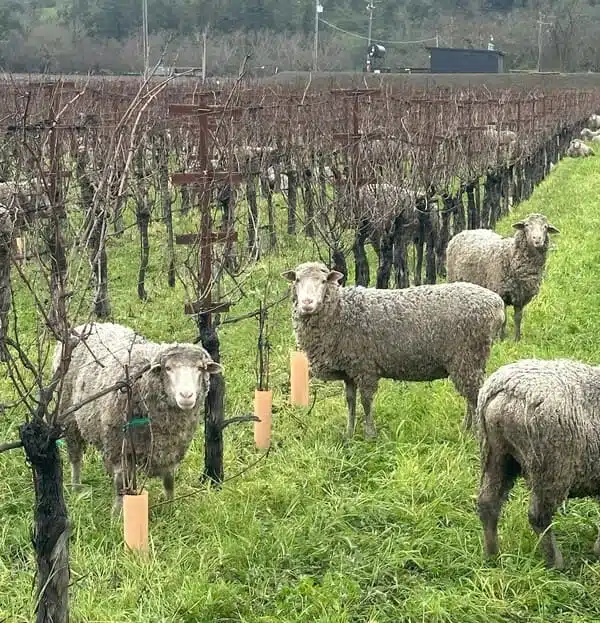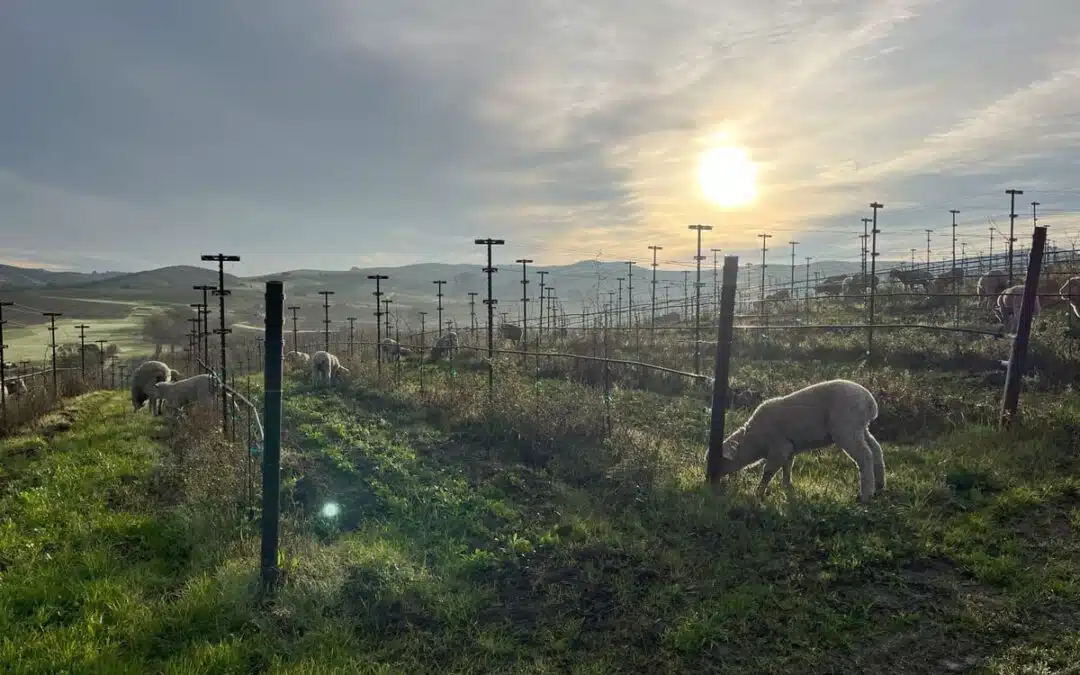Why Are There Sheep in the Vineyards? The Purpose Behind the Trend

If you take a drive through Napa Valley via Highway 29 during the months of December-March, chances are you’ll catch a glimpse of fluffy little lawnmowers ambling about through the vineyards. It’s certainly cause to pull over and take some pictures – but are they there for more than a charming Napa Valley photo-op? Absolutely!
Though they are perfect little vineyard ambassadors, they are also some of our most important workers. As rains blanket Napa Valley from November until April, parched soils are finally given the water they need to burst with new growth. All these new plants are great for the soil health, as each will add different nutrients to the soil and diversify the soil’s microbiome.

If they’re so good for the soil, though, would we want sheep to come through and eat up all these plants? To answer that question, we have to start looking at vineyards as natural ecosystems.
Our own faux-food web
In the wild, herbivorous animals spend most of their waking hours grazing, and yet few natural areas have become barren wastelands devoid of plant life. This is because of the interconnectedness of a natural system – sure, a deer would be happy to stay in one place all day and eat to its heart’s content, but constant stress from predators keeps them on the move. This means that herbivores can’t stay and overeat one location to decimation.
We don’t want our sheep to be hunted though, so we bend the rules of nature a bit – using shepherds, dogs, and electric fencing to ensure that our sheep don’t stay in one block of vineyard for too long. After 24 hours, they’re moved, ensuring that our cover crops aren’t depleted.
Plants are smart, too
When the leafy green parts of a plant get eaten, a chemical is released throughout the plant, signaling all of its appendages. The roots are instructed to stop growing while the plant works to repair the leaves and stems that are gone. Plants make their most important nutritional contributions to the soil while they undergo this process, which is why it is great to have them partially eaten. When they’re full-grown, they won’t make nearly as much of an impact on soil health.
Free fertilizer? Yes please!
Of course, a byproduct of hundreds of sheep on your land will be some free fertilizer! Sheep dung contains millions of microbes that improve the diversity of our microbiome, which is one of the greatest indicators of soil health.
Learn more about how we’re incorporating biodiversity into our vineyards here!


